Mercedes V Class vs Mercedes EQS – Which car suits you better?
Both models have their strengths – but which one suits you more?
Compare performance, efficiency, price and space directly: Mercedes V Class or Mercedes EQS?
Costs and Efficiency:
Price and efficiency are often the first things buyers look at. Here it becomes clear which model has the long-term edge – whether at the pump, the plug, or in purchase price.
Mercedes V Class has a clearly advantage in terms of price – it starts at 48200 £, while the Mercedes EQS costs 93900 £. That’s a price difference of around 45736 £.
Engine and Performance:
Under the bonnet, it becomes clear which model is tuned for sportiness and which one takes the lead when you hit the accelerator.
When it comes to engine power, the Mercedes EQS has a significantly edge – offering 544 HP compared to 237 HP. That’s roughly 307 HP more horsepower.
In acceleration from 0 to 100 km/h, the Mercedes EQS is significantly quicker – completing the sprint in 4.40 s, while the Mercedes V Class takes 7.40 s. That’s about 3 s faster.
In terms of top speed, the Mercedes V Class performs slight better – reaching 220 km/h, while the Mercedes EQS tops out at 210 km/h. The difference is around 10 km/h.
There’s also a difference in torque: Mercedes EQS pulls convincingly stronger with 858 Nm compared to 500 Nm. That’s about 358 Nm difference.
Space and Everyday Use:
Cabin size, boot volume and payload all play a role in everyday practicality. Here, comfort and flexibility make the difference.
Seats: Mercedes V Class offers somewhat more seating capacity – 6 vs 5.
In curb weight, Mercedes V Class is to a small extent lighter – 2192 kg compared to 2545 kg. The difference is around 353 kg.
In terms of boot space, the Mercedes V Class offers decisively more room – 1410 L compared to 610 L. That’s a difference of about 800 L.
In maximum load capacity, the Mercedes V Class performs clearly better – up to 5010 L, which is about 3240 L more than the Mercedes EQS.
When it comes to payload, Mercedes V Class distinct takes the win – 908 kg compared to 565 kg. That’s a difference of about 343 kg.
Who comes out on top?
Overall, the Mercedes V Class shows itself to be wins the duel decisively and secures the title of DriveDuel Champion.
It convinces with the more balanced overall package and proves to be the more versatile choice for everyday use.
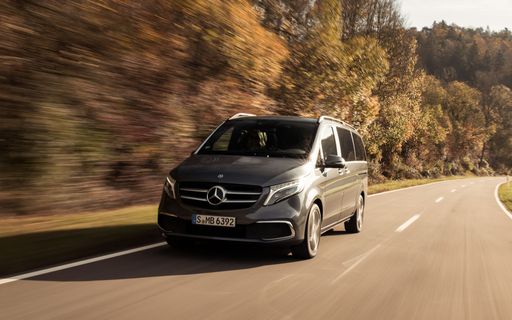
Mercedes V Class
Mercedes V Class
The Mercedes-Benz V-Class exemplifies luxury and versatility in the world of multi-purpose vehicles. Its spacious interior is designed to accommodate both family adventures and executive travel with supreme comfort. With advanced technology and premium materials, the V-Class offers an unparalleled driving experience that seamlessly blends practicality with elegance.
details @ group-media.mercedes-benz.com
@ group-media.mercedes-benz.com
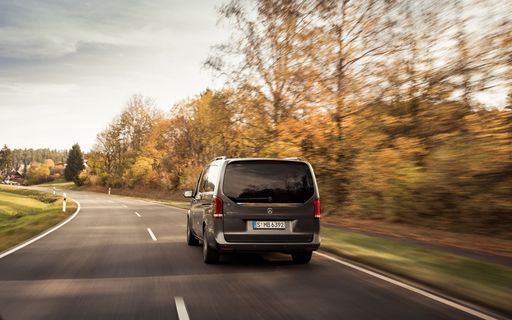 @ group-media.mercedes-benz.com
@ group-media.mercedes-benz.com
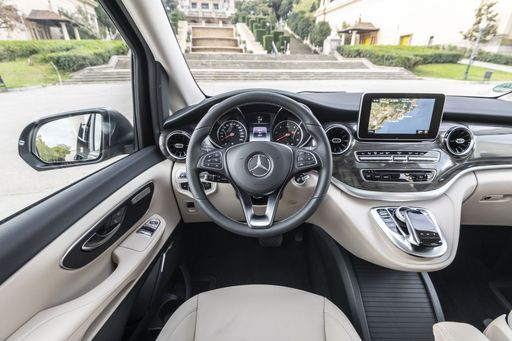 @ group-media.mercedes-benz.com
@ group-media.mercedes-benz.com
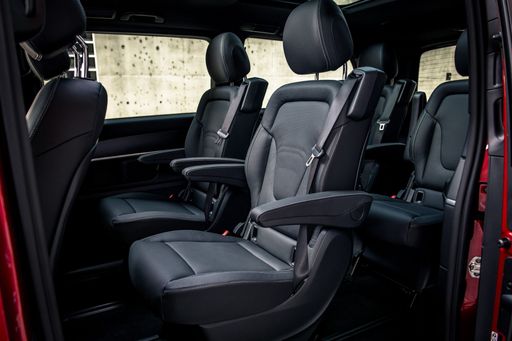 @ group-media.mercedes-benz.com
@ group-media.mercedes-benz.com
Mercedes EQS
The Mercedes-Benz EQS redefines luxury in the realm of electric vehicles, combining exceptional comfort with cutting-edge technology. Its sleek and aerodynamic design is a testament to both elegance and efficiency, setting new standards for the brand. Inside, the EQS offers a serene and spacious cabin equipped with the latest advancements, ensuring a refined driving experience.
details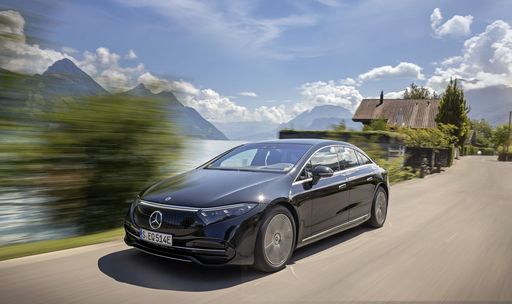 @ group-media.mercedes-benz.com
@ group-media.mercedes-benz.com
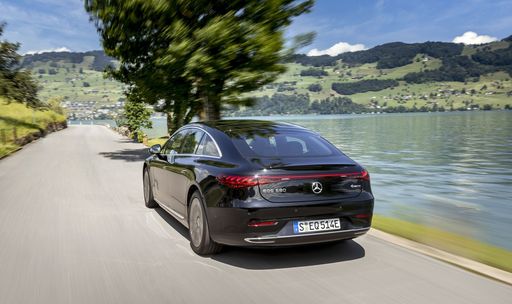 @ group-media.mercedes-benz.com
@ group-media.mercedes-benz.com
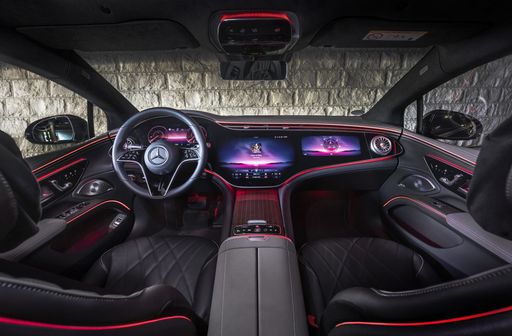 @ group-media.mercedes-benz.com
@ group-media.mercedes-benz.com
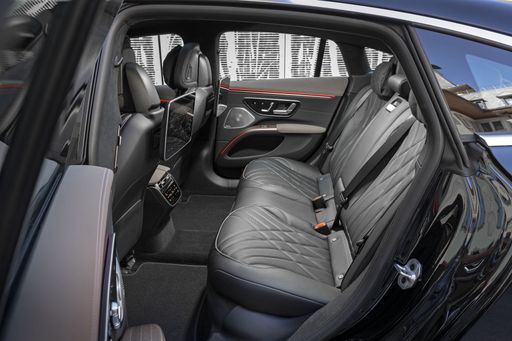 @ group-media.mercedes-benz.com
@ group-media.mercedes-benz.com
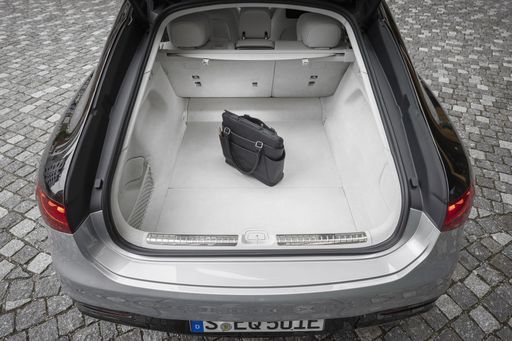 @ group-media.mercedes-benz.com
@ group-media.mercedes-benz.com

|

|
|
|
|
Costs and Consumption |
|
|---|---|
|
Price
48200 - 83300 £
|
Price
93900 - 123500 £
|
|
Consumption L/100km
7.1 - 10.2 L
|
Consumption L/100km
-
|
|
Consumption kWh/100km
-
|
Consumption kWh/100km
16.5 - 17.2 kWh
|
|
Electric Range
-
|
Electric Range
790 - 816 km
|
|
Battery Capacity
-
|
Battery Capacity
118 kWh
|
|
co2
187 - 232 g/km
|
co2
0 g/km
|
|
Fuel tank capacity
57 - 70 L
|
Fuel tank capacity
-
|
Dimensions and Body |
|
|---|---|
|
Body Type
Bus
|
Body Type
Hatchback
|
|
Seats
6
|
Seats
5
|
|
Doors
5
|
Doors
5
|
|
Curb weight
2192 - 2464 kg
|
Curb weight
2545 - 2655 kg
|
|
Trunk capacity
610 - 1410 L
|
Trunk capacity
610 L
|
|
Length
4895 - 5370 mm
|
Length
5223 mm
|
|
Width
1928 mm
|
Width
1926 mm
|
|
Height
1901 - 1908 mm
|
Height
1512 mm
|
|
Max trunk capacity
4200 - 5010 L
|
Max trunk capacity
1770 L
|
|
Payload
636 - 908 kg
|
Payload
550 - 565 kg
|
Engine and Performance |
|
|---|---|
|
Engine Type
Diesel, Petrol
|
Engine Type
Electric
|
|
Transmission
Automatic
|
Transmission
Automatic
|
|
Transmission Detail
Automatic Gearbox
|
Transmission Detail
Reduction Gearbox
|
|
Drive Type
Rear-Wheel Drive, All-Wheel Drive
|
Drive Type
All-Wheel Drive, Rear-Wheel Drive
|
|
Power HP
163 - 237 HP
|
Power HP
360 - 544 HP
|
|
Acceleration 0-100km/h
7.4 - 10.7 s
|
Acceleration 0-100km/h
4.4 - 6.2 s
|
|
Max Speed
188 - 220 km/h
|
Max Speed
210 km/h
|
|
Torque
370 - 500 Nm
|
Torque
568 - 858 Nm
|
|
Number of Cylinders
4
|
Number of Cylinders
-
|
|
Power kW
120 - 174 kW
|
Power kW
265 - 400 kW
|
|
Engine capacity
1950 - 1999 cm3
|
Engine capacity
-
|
General |
|
|---|---|
|
Model Year
2025
|
Model Year
2024
|
|
CO2 Efficiency Class
G
|
CO2 Efficiency Class
A
|
|
Brand
Mercedes-Benz
|
Brand
Mercedes-Benz
|
Is the Mercedes V Class offered with different drivetrains?
Available configurations include Rear-Wheel Drive or All-Wheel Drive.
The prices and data displayed are estimates based on German list prices and may vary by country. This information is not legally binding.
